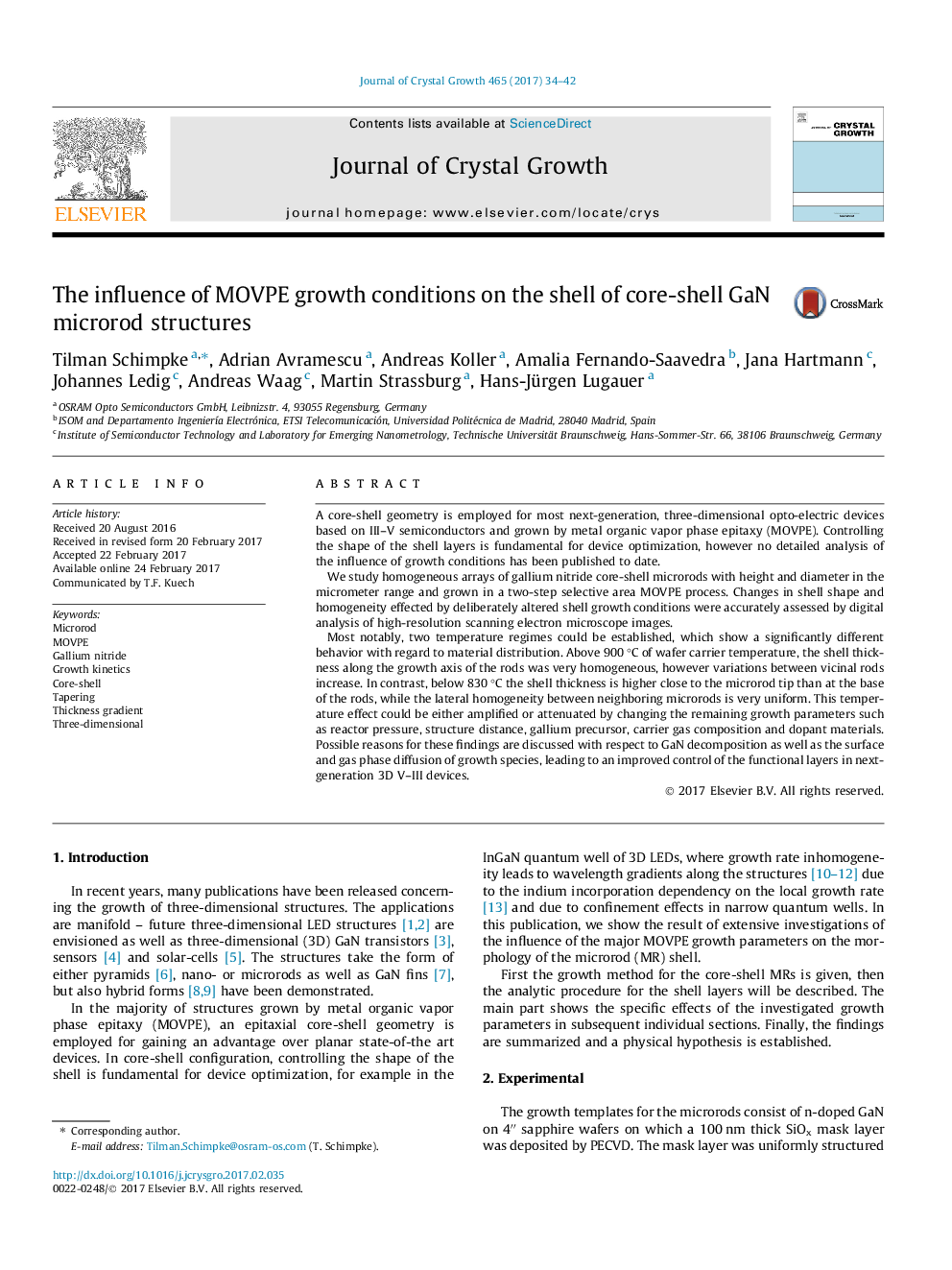| Article ID | Journal | Published Year | Pages | File Type |
|---|---|---|---|---|
| 5489811 | Journal of Crystal Growth | 2017 | 9 Pages |
Abstract
Most notably, two temperature regimes could be established, which show a significantly different behavior with regard to material distribution. Above 900 °C of wafer carrier temperature, the shell thickness along the growth axis of the rods was very homogeneous, however variations between vicinal rods increase. In contrast, below 830 °C the shell thickness is higher close to the microrod tip than at the base of the rods, while the lateral homogeneity between neighboring microrods is very uniform. This temperature effect could be either amplified or attenuated by changing the remaining growth parameters such as reactor pressure, structure distance, gallium precursor, carrier gas composition and dopant materials. Possible reasons for these findings are discussed with respect to GaN decomposition as well as the surface and gas phase diffusion of growth species, leading to an improved control of the functional layers in next-generation 3D V-III devices.
Related Topics
Physical Sciences and Engineering
Physics and Astronomy
Condensed Matter Physics
Authors
Tilman Schimpke, Adrian Avramescu, Andreas Koller, Amalia Fernando-Saavedra, Jana Hartmann, Johannes Ledig, Andreas Waag, Martin Strassburg, Hans-Jürgen Lugauer,
